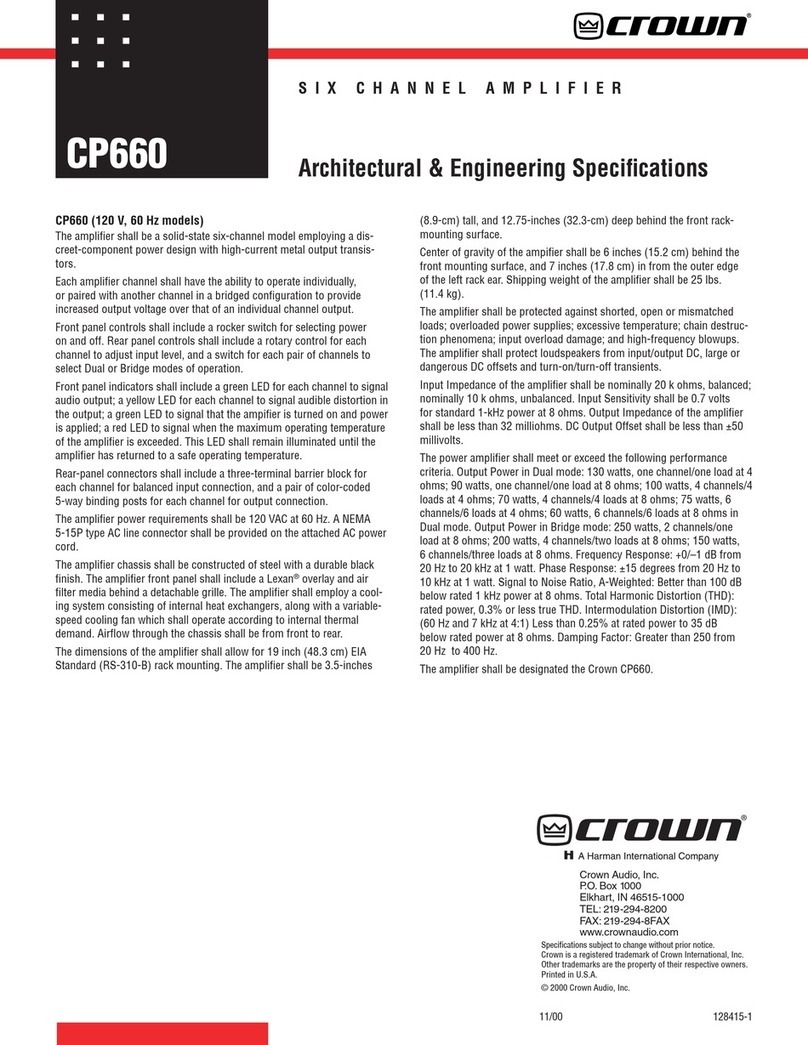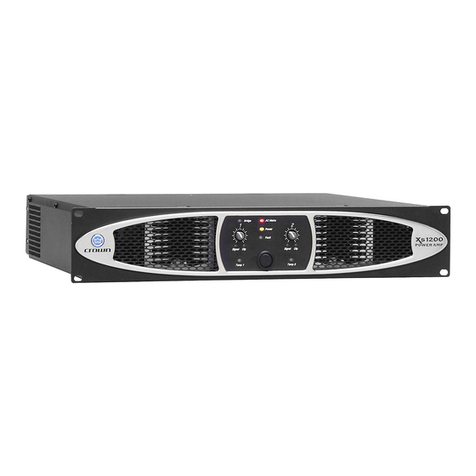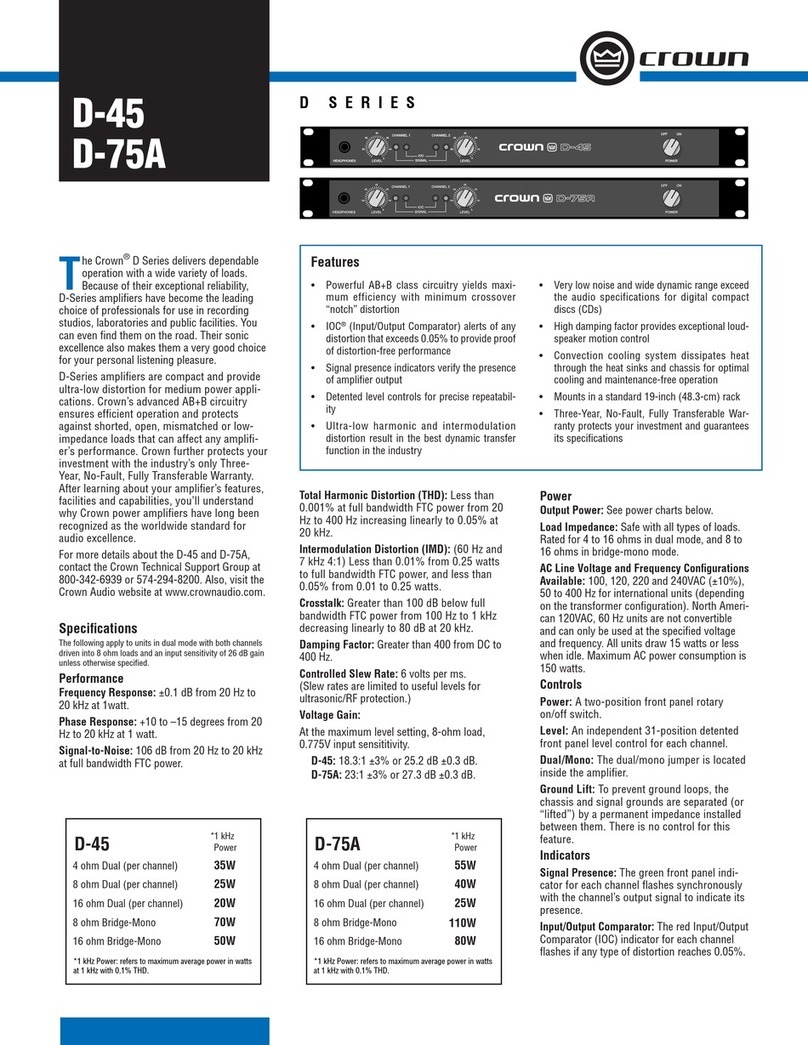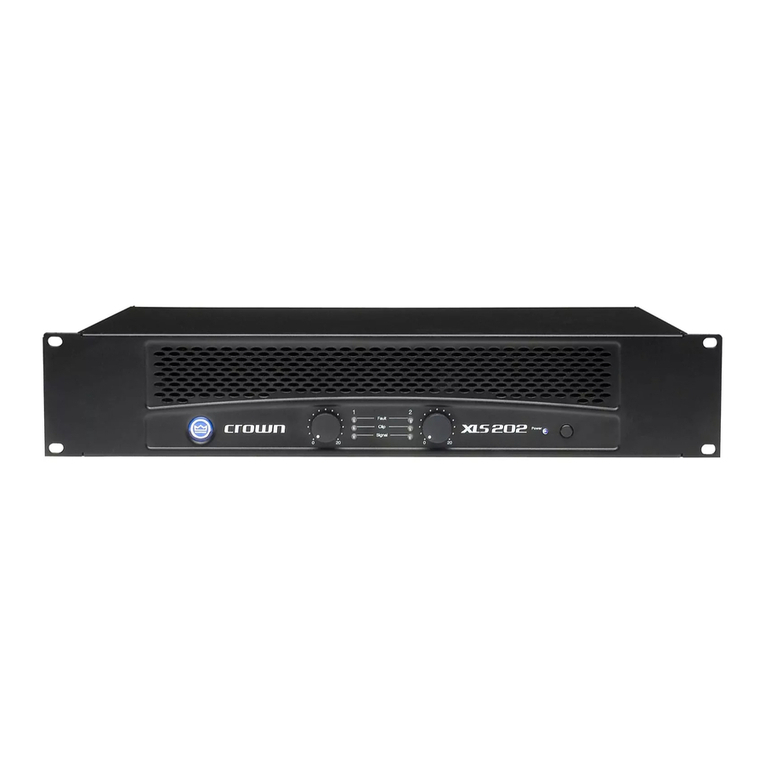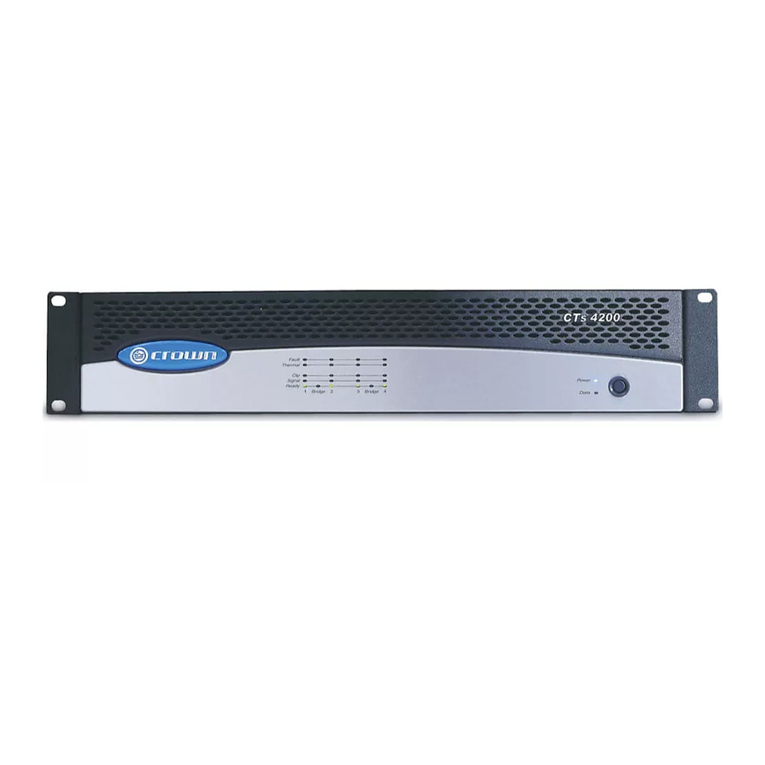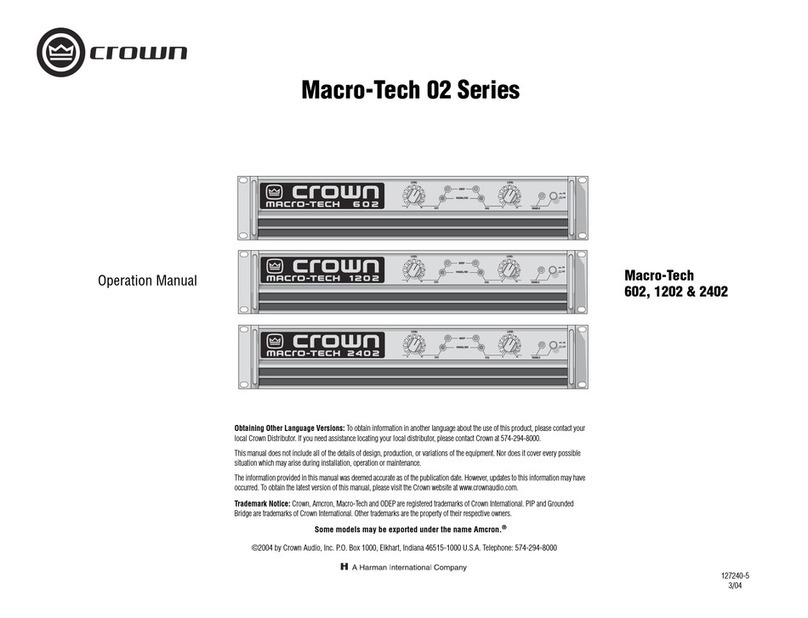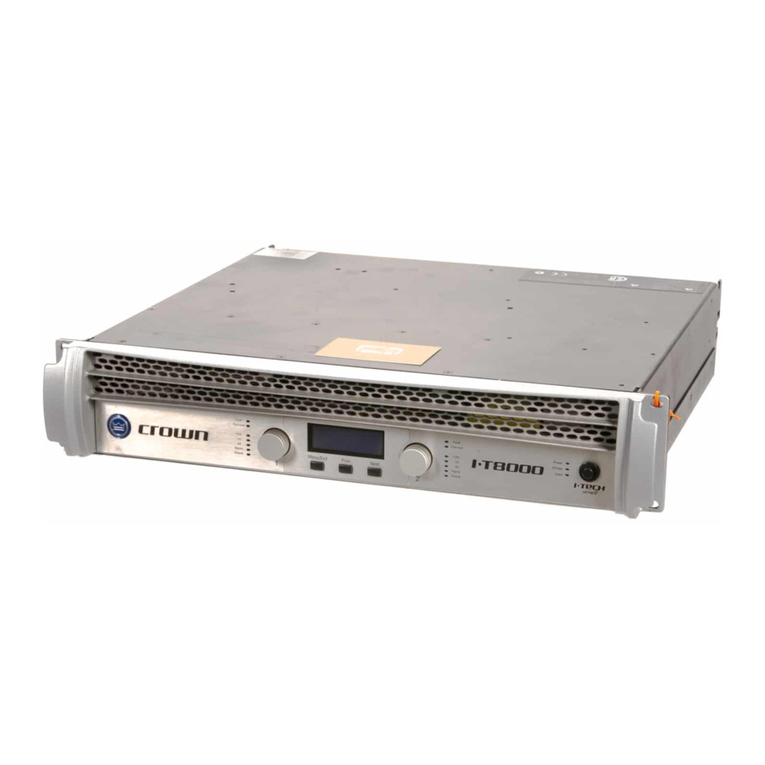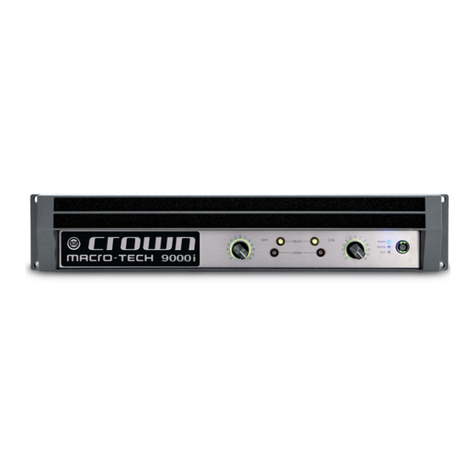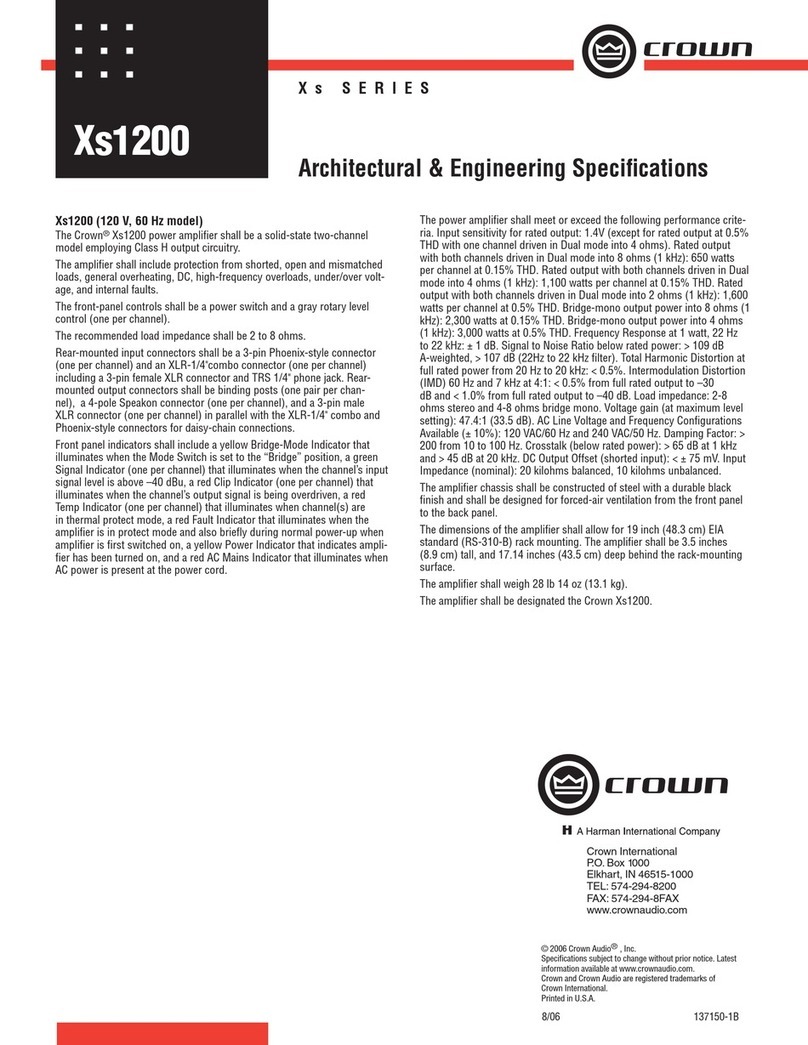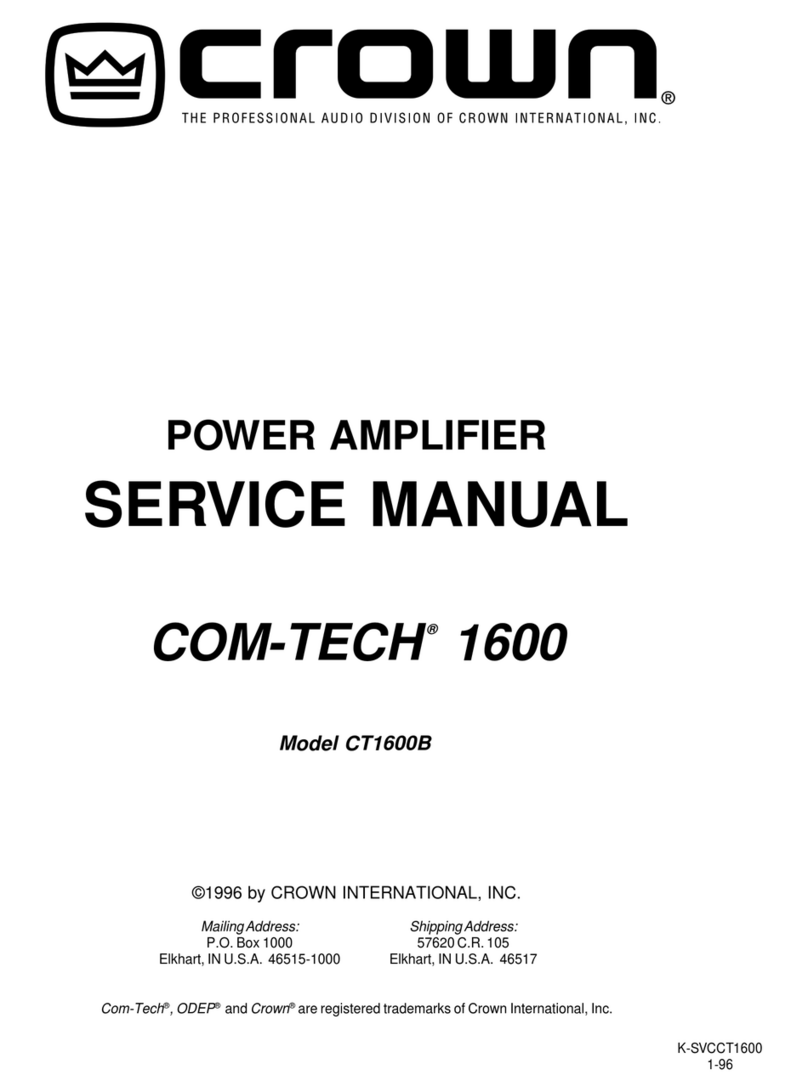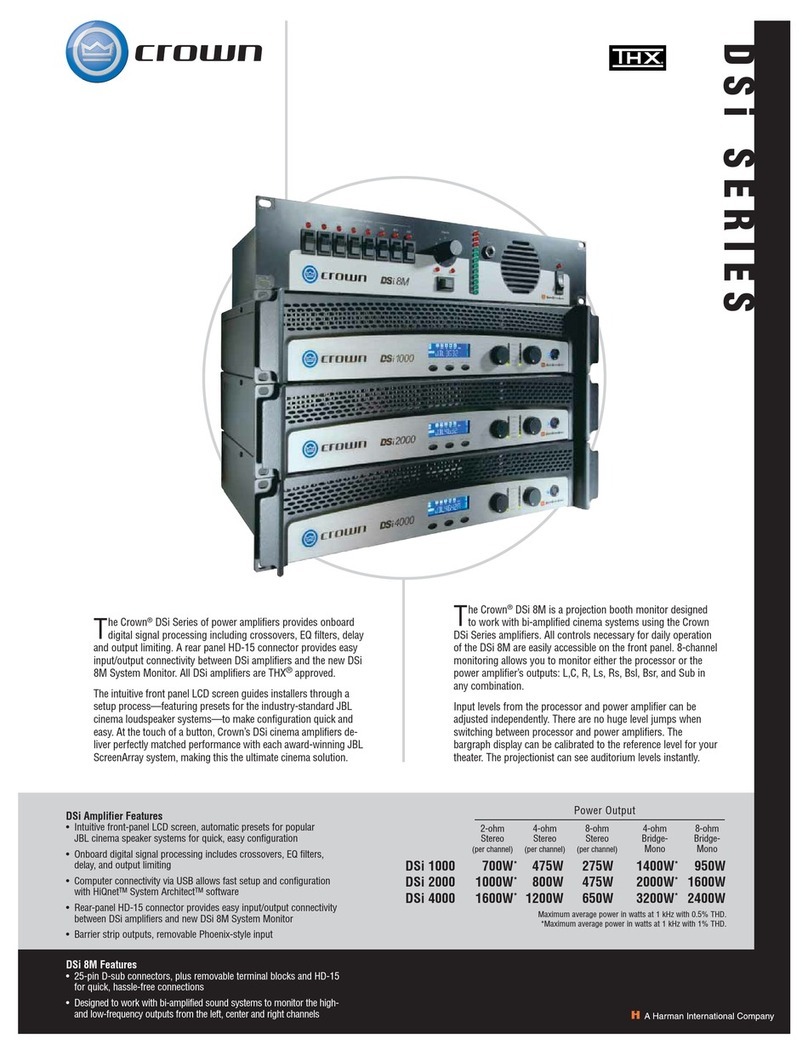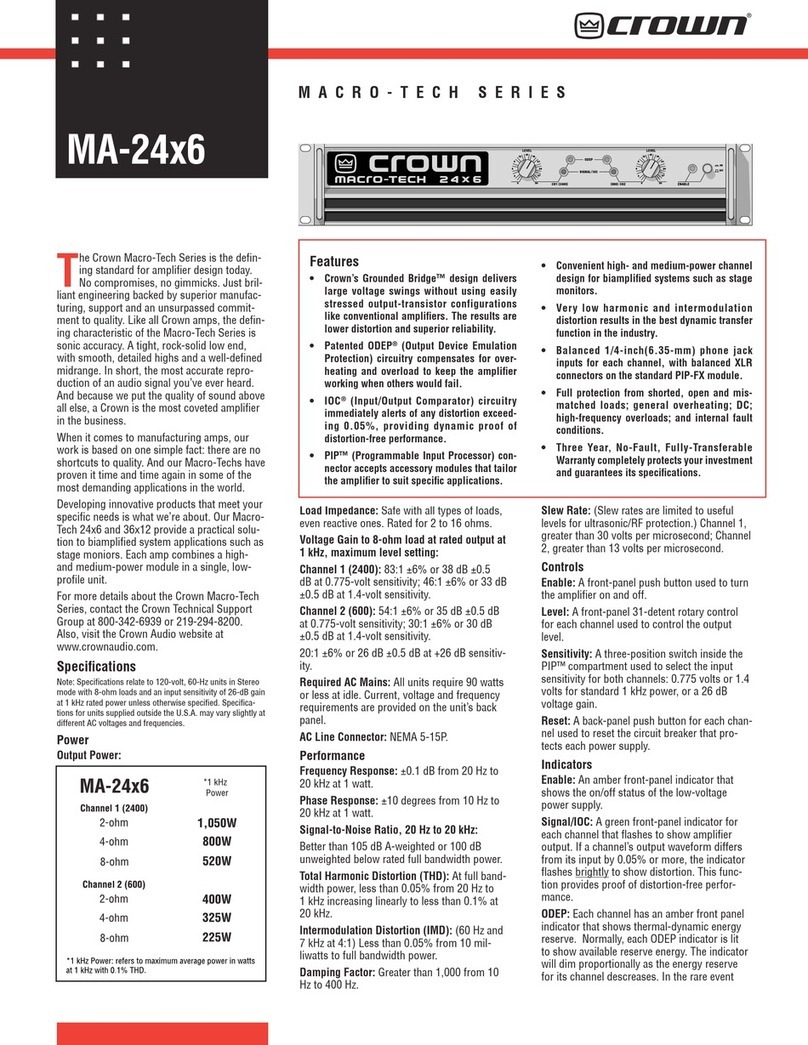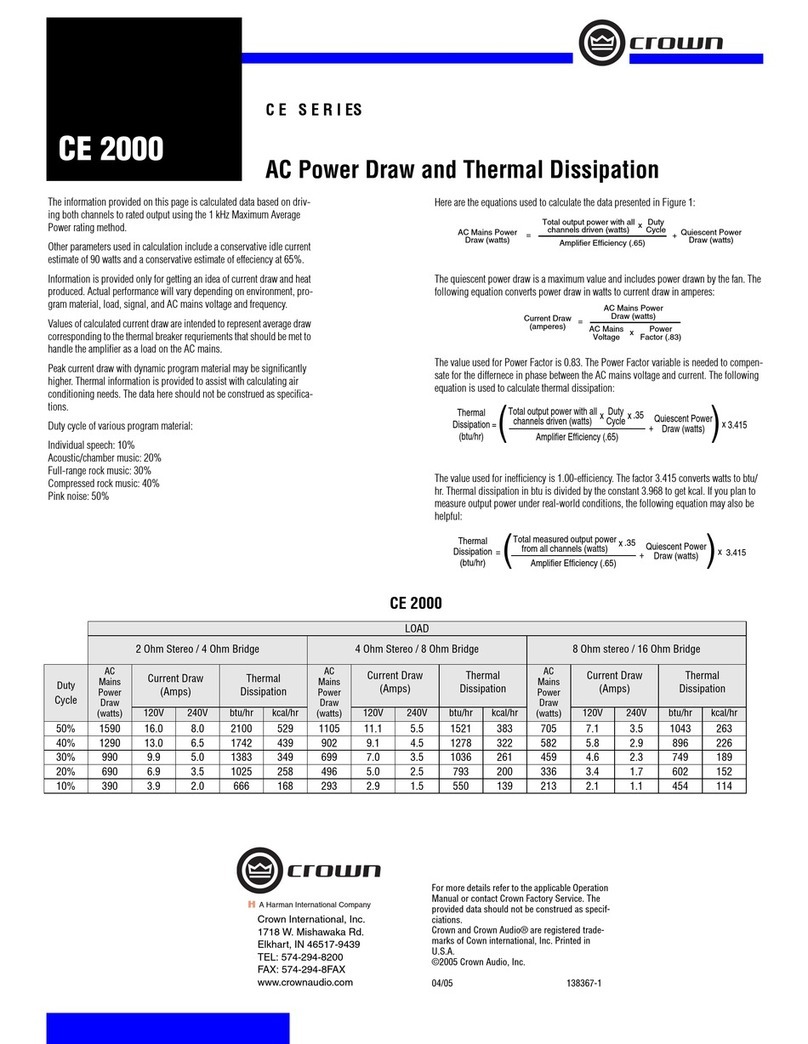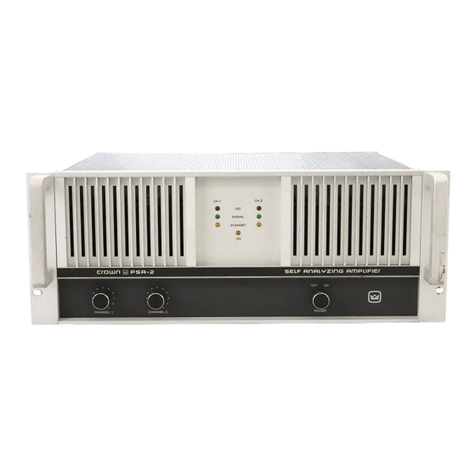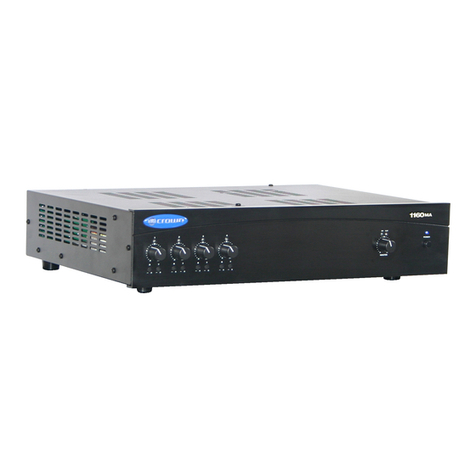
WORLDWIDE
SUMMARY OF WARRANTY
The Cro n Audio Division of Cro n International, Inc., 1718 West
Misha aka Road, Elkhart, Indiana 46517-4095 U.S.A. arrants to you, the
ORIGINAL PURCHASER and ANY SUBSEQUENT OWNER of each
NEW Cro n1 product, for a period of three (3) years from the date of
purchase by the original purchaser (the “ arranty period”) that the ne
Cro n product is free of defects in materials and orkmanship, and e
further arrant the ne Cro n product regardless of the reason for failure,
except as excluded in this Cro n Warranty.
1
Note: If your unit bears the name “Amcron,” please substitute it for the
name “Cro n” in this arranty.
IT MS XCLUD D FROM THIS CROWN WARRANTY
This Cro n Warranty is in effect only for failure of a ne Cro n product
hich occurred ithin the Warranty Period. It does not cover any product
hich has been damaged because of any intentional misuse, accident,
negligence, or loss hich is covered under any of your insurance contracts.
This Cro n Warranty also does not extend to the ne Cro n product if the
serial number has been defaced, altered, or removed.
WHAT TH WARRANTOR WILL DO
We ill remedy any defect, regardless of the reason for failure (except as
excluded), by repair, replacement, or refund. We may not elect refund
unless you agree, or unless e are unable to provide replacement, and
repair is not practical or cannot be timely made. If a refund is elected, then
you must make the defective or malfunctioning product available to us free
and clear of all liens or other encumbrances. The refund ill be equal to the
actual purchase price, not including interest, insurance, closing costs, and
other finance charges less a reasonable depreciation on the product from
the date of original purchase. Warranty ork can only be performed at our
authorized service centers. We ill remedy the defect and ship the product
from the service center ithin a reasonable time after receipt of the
defective product at our authorized service center.
HOW TO OBTAIN WARRANTY S RVIC
You must notify us of your need for arranty service not later than ninety
(90) days after expiration of the arranty period. All components must be
shipped in a factory pack. Corrective action ill be taken ithin a
reasonable time of the date of receipt of the defective product by our
authorized service center. If the repairs made by our authorized service
center are not satisfactory, notify our authorized service center
immediately.
DISCLAIM R OF CONS QU NTIAL AND INCID NTAL DAMAG S
YOU ARE NOT ENTITLED TO RECOVER FROM US ANY INCIDENTAL
DAMAGES RESULTING FROM ANY DEFECT IN THE NEW CROWN
PRODUCT. THIS INCLUDES ANY DAMAGE TO ANOTHER PRODUCT
OR PRODUCTS RESULTING FROM SUCH A DEFECT.
WARRANTY ALT RATIONS
No person has the authority to enlarge, amend, or modify this Cro n
Warranty. This Cro n Warranty is not extended by the length of time hich
you are deprived of the use of the ne Cro n product. Repairs and
replacement parts provided under the terms of this Cro n Warranty shall
carry only the unexpired portion of this Cro n Warranty.
D SIGN CHANG S
We reserve the right to change the design of any product from time to time
ithout notice and ith no obligation to make corresponding changes in
products previously manufactured.
L GAL R M DI S OF PURCHAS R
No action to enforce this Cro n Warranty shall be commenced later than
ninety (90) days after expiration of the arranty period.
THIS STAT M NT OF WARRANTY SUP RS D S ANY OTH RS
CONTAIN D IN THIS MANUAL FOR CROWN PRODUCTS.
9/90
NORTH AMERICA
SUMMARY OF WARRANTY
The Cro n Audio Division of Cro n International, Inc., 1718 West Misha aka
Road, Elkhart, Indiana 46517-4095 U.S.A. arrants to you, the ORIGINAL
PURCHASER and ANY SUBSEQUENT OWNER of each NEW Cro n product,
for a period of three (3) years from the date of purchase by the original purchaser
(the “ arranty period”) that the ne Cro n product is free of defects in materials
and orkmanship. We further arrant the ne Cro n product regardless of the
reason for failure, except as excluded in this Warranty.
IT MS XCLUD D FROM THIS CROWN WARRANTY
This Cro n Warranty is in effect only for failure of a ne Cro n product hich
occurred ithin the Warranty Period. It does not cover any product hich has
been damaged because of any intentional misuse, accident, negligence, or loss
hich is covered under any of your insurance contracts. This Cro n Warranty
also does not extend to the ne Cro n product if the serial number has been
defaced, altered, or removed.
WHAT TH WARRANTOR WILL DO
We ill remedy any defect, regardless of the reason for failure (except as
excluded), by repair, replacement, or refund. We may not elect refund unless you
agree, or unless e are unable to provide replacement, and repair is not practical
or cannot be timely made. If a refund is elected, then you must make the defective
or malfunctioning product available to us free and clear of all liens or other
encumbrances. The refund ill be equal to the actual purchase price, not
including interest, insurance, closing costs, and other finance charges less a
reasonable depreciation on the product from the date of original purchase.
Warranty ork can only be performed at our authorized service centers or at the
factory. We ill remedy the defect and ship the product from the service center
or our factory ithin a reasonable time after receipt of the defective product at our
authorized service center or our factory. All expenses in remedying the defect,
including surface shipping costs in the United States, ill be borne by us. (You
must bear the expense of shipping the product bet een any foreign country and
the port of entry in the United States and all taxes, duties, and other customs fees
for such foreign shipments.)
HOW TO OBTAIN WARRANTY S RVIC
You must notify us of your need for arranty service not later than ninety (90)
days after expiration of the arranty period. All components must be shipped in
a factory pack, hich, if needed, may be obtained from us free of charge.
Corrective action ill be taken ithin a reasonable time of the date of receipt of
the defective product by us or our authorized service center. If the repairs made
by us or our authorized service center are not satisfactory, notify us or our
authorized service center immediately.
DISCLAIM R OF CONS QU NTIAL AND INCID NTAL DAMAG S
YOU ARE NOT ENTITLED TO RECOVER FROM US ANY INCIDENTAL
DAMAGES RESULTING FROM ANY DEFECT IN THE NEW CROWN
PRODUCT. THIS INCLUDES ANY DAMAGE TO ANOTHER PRODUCT OR
PRODUCTS RESULTING FROM SUCH A DEFECT. SOM STAT S DO
NOT ALLOW TH XCLUSION OR LIMITATIONS OF INCID NTAL OR
CONS QU NTIAL DAMAG S, SO TH ABOV LIMITATION OR
XCLUSION MAY NOT APPLY TO YOU.
WARRANTY ALT RATIONS
No person has the authority to enlarge, amend, or modify this Cro n Warranty.
This Cro n Warranty is not extended by the length of time hich you are
deprived of the use of the ne Cro n product. Repairs and replacement parts
provided under the terms of this Cro n Warranty shall carry only the unexpired
portion of this Cro n Warranty.
D SIGN CHANG S
We reserve the right to change the design of any product from time to time ithout
notice and ith no obligation to make corresponding changes in products
previously manufactured.
L GAL R M DI S OF PURCHAS R
THIS CROWN WARRANTY GIVES YOU SPECIFIC LEGAL RIGHTS, YOU
MAY ALSO HAVE OTHER RIGHTS WHICH VARY FROM STATE TO STATE.
No action to enforce this Cro n Warranty shall be commenced later than ninety
(90) days after expiration of the arranty period.
THIS STAT M NT OF WARRANTY SUP RS D S ANY OTH RS
CONTAIN D IN THIS MANUAL FOR CROWN PRODUCTS.
9/90
Telephone: 219-294-8200. Facsimile: 219-294-8301
Telephone: 219-294-8200. Facsimile: 219-294-8301
THREE YEAR
FULL WARRANTY
YEAR
3
YEAR
3
